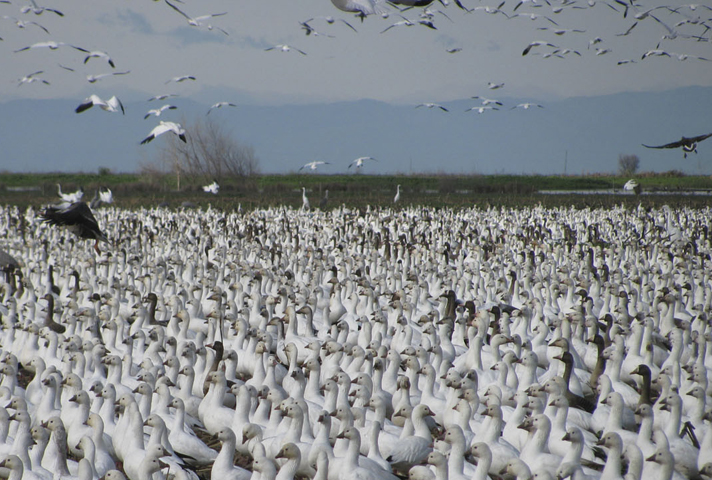
We complete another circuit of the country’s refuges that have benefited from MBCF/Stamp funds with a visit to Region 8 (California and Nevada) and a look at the Merced National Wildlife Refuge in the Central Valley of California. At first glance, Merced would seem to be one of our more conventional refuges, composed largely of wetlands, upland grasslands, and riparian woods and supporting migrant and wintering waterfowl. But it holds some surprises as well.
The first surprise is that when the refuge was established in 1951, it was created under the Lea Act. That is, its objective was not the protection of wildlife and habitat but rather a way to move winter waterfowl out of adjacent farmland, where the birds were damaging crops. Fortunately, agricultural and management practices have changed since then, reducing the conflict between crops and birds. Some 3,800 acres were purchased with MBCF/Duck Stamp funds. Today, the refuge includes the Merced unit (which includes an auto-tour route and walking trails accessed from the colorfully-named Sandy Mush Road) as well as the Lonetree, Arena Plains, and Snowbird units. Merced NWR is managed under the San Luis National Wildlife Refuge Complex, which includes another 15,000 acres acquired via MBCF/Stamp funds.
The property hosts the greatest population of wintering Lesser Sandhill Cranes in the Pacific Flyway, with as many as 20,000 birds paying a visit each year. Ross’s, Greater White-fronted, and Snow Geese also spend the cold months here. So perhaps it’s not surprising that the best time of the year to visit is winter-unless your main interest is in the breeding Swainson’s Hawks and Tri-colored Blackbirds.
A specialized habitat found in the Arena Plains unit is a region of vernal pools. As Joseph G. Silveira explains, in an extensive analysis of the geology, plant communities, and endemics supported by this special place, a surprising management technique is the grazing by cattle. In this ecological setting, grazing controls the build-up of non-native vegetation like Yellow Star-thistle and Prickly Lettuce. Silveira notes that the action of cattle maintains open sand habitats that benefit flora and fauna alike.
One more surprise: researchers are using the wetlands to study growth rates-of fish! A team recently released 2,500 young Chinook Salmon into Cinnamon Slough, a seasonal wetland. Depending on the results of this and subsequent studies, Merced wetlands may contribute to the restoration of free-swimming salmon to the waters of the San Joaquin River.
In what John Muir called the “extravagantly flowery” Great Central Plain of California, Merced NWR hosts a Crane Day each November. A favorite subject of videographers is the bumper-to-bumper flights of geese at sunrise and sundown, as a quick YouTube search will attest.
This National Wildlife Refuge profile first appeared in the 2 December 2015 issue of Wingtips.